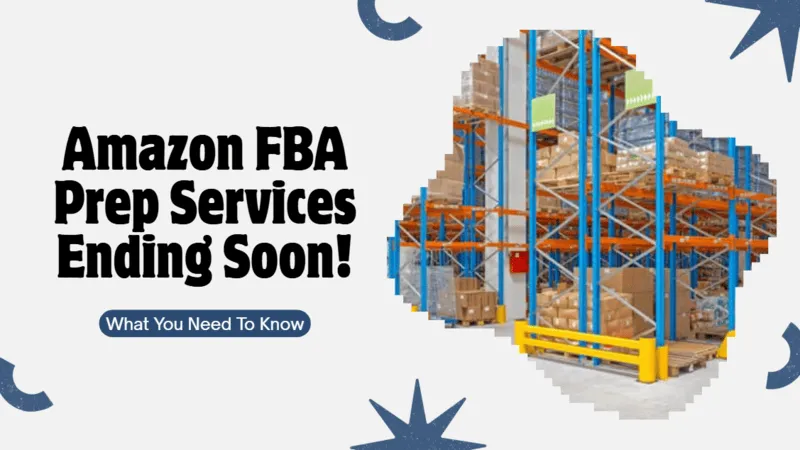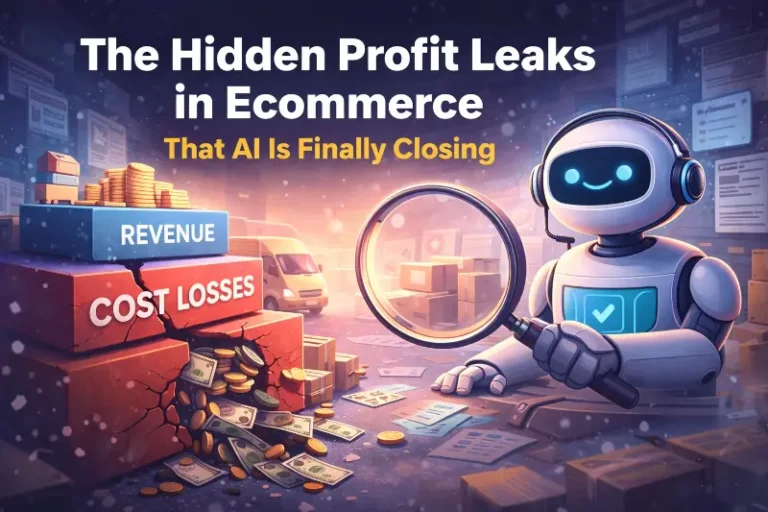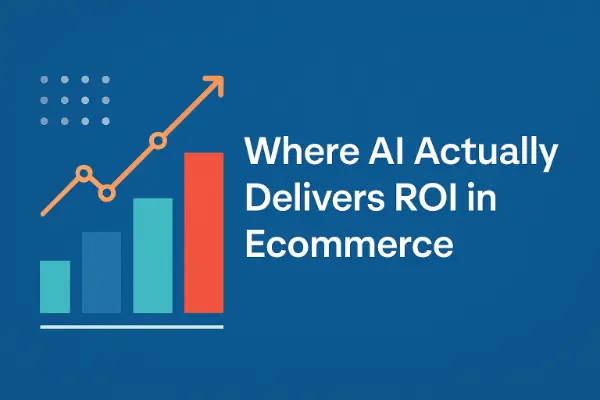Amazon FBA Ends Prep Services: Alternatives & Seller Strategies

Last updated on August 13, 2025

Amazon is pulling the plug on its FBA prep services, and the implications go deeper than a simple policy change. Starting January 1, 2026, Amazon FBA sellers will have to prep and label their inventory themselves (or pay someone else to do it). Amazon Fulfillment by Amazon (FBA) will no longer offer its optional prep services for items headed to its fulfillment centers, ending a program that many sellers quietly depended on. It’s a big shift for anyone used to sending products to Amazon and letting them handle item labeling, poly-bagging, bubble wrapping, and other prep tasks. At first, I was stunned. How convenient it was to have Amazon do those tedious FBA prep steps for a fee. But now Amazon says sellers have “significantly” improved their own packaging capabilities, and the vast majority handle prep themselves. Fair enough, but this move is going to have ripple effects across the entire supply chain and ecommerce business.
Slash Your Fulfillment Costs by Up to 30%
Cut shipping expenses by 30% and boost profit with Cahoot's AI-optimized fulfillment services and modern tech —no overheads and no humans required!
I'm Interested in Saving Time and MoneyWhy Amazon Is Dropping FBA Prep Services
Amazon originally launched its FBA prep service years ago to help sellers meet its stringent packaging requirements. If an item wasn’t properly packaged, say a fragile glass needed extra bubble wrap or a plush toy needed a polybag, Amazon would do it for a per-item fee and make sure it was up to FBA standards. The goal was to protect products during the shipping process and reduce delays or damage. Over time, Amazon trained us on how to meet its stringent requirements for things like suffocation labels and barcodes.
Now, Amazon claims, most sellers (and their suppliers) have gotten the memo. In Amazon’s own words, “We initially introduced prep services to help protect products… Since then, we’ve seen a significant improvement in seller packaging capabilities and a reduced need for our prep services.” They noted that the vast majority of sellers either do prep themselves, use their own manufacturing partners, or rely on third-party service providers like an FBA prep center.
Amazon also has a business incentive here. By eliminating these FBA services, they can streamline operations in their fulfillment network. Every minute a warehouse worker spends poly-bagging or stickering inventory units is a minute not spent shipping orders. Amazon explicitly said this change will let FBA focus on “faster and more efficient fulfillment center operations” and quicker deliveries for customers. In other words, they want to reduce any bottlenecks caused by seller inventory arriving in subpar condition.
I suspect Amazon also wasn’t making much profit on these prep fees, or the hidden fees were discouraging sellers from sending certain items. Plus, Amazon has been pushing programs like Ships in Product Packaging (SIPP) that encourage manufacturers to use ready-to-ship packaging (and even give FBA fee discounts for it) to lower prep needs. All of this aligns with Amazon’s broader goal: make sellers responsible for inventory prep so that inbound shipments check in faster and with less labor on Amazon’s side.
How This Impacts Sellers (Spoiler: It’s Big)
Make no mistake, this is a fulfillment game-changer for FBA sellers. If you’ve been leaning on Amazon’s item labeling services or bubble-wrapping at the fulfillment center, you now need a Plan B. One seller on the Amazon forums said the new policy will “crush them” because they don’t have a warehouse and used Amazon as their prep solution. I feel that pain; not every small seller has a spare garage (or staff) to perform prep on hundreds of units.
Without Amazon’s dedicated support teams handling prep, sellers must ensure proper prep before shipment or risk inventory being rejected. Amazon made it clear: come January 1, 2026, any FBA shipment created after that date must arrive prepped and labeled or it won’t be eligible for reimbursement if items get damaged or lost. They might even outright refuse the inventory at the warehouse if it’s not compliant. That means if you ship in products without a suffocation-warning polybag or missing barcode labels, you could be eating the cost of that inventory. Yikes.
The operational impact is huge on inventory management and timelines. Sellers will have to build in extra time and processes to get products prep-ready. For many sellers, that means working with a third-party prep service or fulfillment partner. It’s spawning a mini-industry of FBA prep companies ready to step in. The silver lining is that doing prep outside Amazon can be more cost-effective at scale—you can shop around for the best rates and avoid Amazon’s one-size-fits-all fees.
Amazon’s own prep fees weren’t cheap; for example, they might charge ~$1.30 per unit to bubble-wrap and label a fragile item. Those costs were often rolled into our overhead as hidden fees, hurting margins. Now, at least, you have control: either invest in in-house prep or negotiate with fulfillment companies that specialize in Amazon compliance.
There’s also an argument that this change encourages better overall inventory management. If we know Amazon won’t fix prep mistakes, you’ll need to be extra careful to prep products right the first time, meaning fewer delays, fewer returns processing headaches from damaged items, and less excess inventory sitting unsellable due to prep issues.
Looking for a New 3PL? Start with this Free RFP Template
Cut weeks off your selection process. Avoid pitfalls. Get the only 3PL RFP checklist built for ecommerce brands, absolutely free.
Get My Free 3PL RFPAdapting to a No-Prep FBA World
So, what are sellers to do? Many Cahoot clients are already treating this as a wake-up call to tighten up their operations. Here’s one possible game plan (and what I’d suggest to any Amazon seller):
- Audit Your Products: Identify SKUs relying on Amazon for prep. Fragile glassware, liquids, items needing polybags or labels are now your responsibility.
- Line Up a Prep Solution: Train your staff or vet a reliable 3PL/FBA prep service that can receive, inspect, label, polybag, and forward inventory.
- Leverage Manufacturers: Work with suppliers to package to Amazon specs during production—this saves time and cost.
- Use the SIPP Program: Eligible items with retail packaging suitable for shipping qualify for FBA fee discounts and skip additional prep.
- Don’t Forget Item Labeling: Ensure every unit has a correct FNSKU or barcode label before it leaves your hands.
A Mindset Shift
FBA is still awesome for scale and Prime eligibility, but this change reminds us not to put all our eggs in one basket. It might be a good time to diversify fulfillment models, maybe stock more units with a multi-channel fulfillment partner or your own warehouse for DTC fulfillment. In fact, at Cahoot, we’ve been helping sellers fulfill from a nationwide network of warehouses for fast direct-to-customer orders. Those same warehouses are FBA prep experts and can act as backup fulfillment for your Amazon store. The end of Amazon’s prep service is a headache, no doubt. But it’s also an opportunity to build a more resilient operation. You’ll save on those Amazon prep fees, gain more control over inventory quality, and possibly even speed up the supply chain.
It’s like graduating from Amazon’s training wheels—a bit wobbly at first, but ultimately empowering. If you start now, come January, you’ll have your shipping plan sorted with everything in proper packaging, ready to roll.
Scale Faster with the World’s First Peer-to-Peer Fulfillment Network
Tap into a nationwide network of high-performance partner warehouses — expand capacity, cut shipping costs, and reach customers 1–2 days faster.
Explore Fulfillment NetworkFrequently Asked Questions
What is an Amazon FBA prep service, and why was it initially introduced?
An Amazon FBA prep service handles packaging, polybagging, bubble wrap, and item labeling services so products are properly packaged for fulfillment by Amazon. Amazon initially introduced prep services to protect products, improve inventory management, and streamline efficient fulfillment center operations for Amazon sellers.
When will Amazon stop offering FBA prep services, and what does it mean for sellers?
Amazon will end prep services on January 1, 2026. Any FBA shipments created after this date must arrive fully compliant with Amazon’s stringent requirements. Amazon FBA sellers must handle proper prep before products are sent to Amazon fulfillment centers to avoid delays or rejections.
What are the best alternatives to Amazon’s FBA prep services?
Amazon sellers can work with a trusted FBA prep center, engage manufacturing partners for their own packaging, or use third-party service providers with a nationwide network to handle labeling services, returns processing, and prep needs in a cost-effective way.
How should inventory management change to handle the loss of FBA prep services?
Sellers should audit the entire inventory for eligible products requiring special packaging, document correct packaging steps for each SKU, and align fulfillment companies or manufacturing partners to ensure products are properly packaged before shipment.
What risks come with not meeting Amazon’s prep requirements?
Non-compliant FBA shipments may be refused or delayed, increasing storage fees, hurting Amazon sales, and risking account health. Using a fulfillment partner or FBA prep center can save time, reduce hidden fees, and ensure the shipping process meets Amazon’s requirements.

Turn Returns Into New Revenue


 7 minutes
7 minutes


